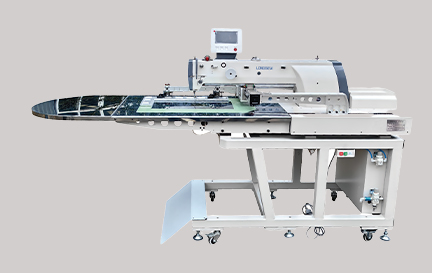Affordable Sewing Machines for Jute Bags Tailored for Quality and Efficiency in Production
Jute Bag Sewing Machines A Sustainable Solution for Eco-Friendly Packaging
In recent years, the demand for sustainable products has surged as consumers and businesses alike prioritize eco-friendliness in their choices. One such product that has gained significant attention is the jute bag, a natural, biodegradable alternative to plastic bags. With the increasing popularity of jute bags, the need for efficient production processes has also grown, leading to the rise of jute bag sewing machines.
The Importance of Jute Bags
Jute is a long, soft, and shiny vegetable fiber that can be spun into coarse, strong threads. Often referred to as the golden fiber, jute is biodegradable and compostable, making it an environmentally friendly option. Jute bags are versatile and can be used for various purposes, including shopping, packaging, and promotional items. Their durability and sustainability contribute to their appeal as more individuals and retailers seek to reduce their environmental impact.
The Role of Jute Bag Sewing Machines
Jute bag sewing machines are specifically designed to streamline the process of manufacturing jute bags. These machines are equipped with powerful stitching capabilities that can handle the thick and robust fibers of jute, ensuring that the bags are sewn securely and will withstand heavy loads. There are several types of sewing machines available, including manual, semi-automatic, and fully automatic models, each catering to different production needs.
1. Manual Jute Bag Sewing Machines These machines are operated by hand and are suitable for small-scale production. They are often preferred by artisans and cottage industries due to their affordability and simplicity. Manual machines allow users to have full control over the stitching process, making them ideal for customized designs.
2. Semi-Automatic Sewing Machines These machines are a step up from manual machines and come with automated features that can improve efficiency. They can handle larger volumes of jute bags and often include features such as automatic thread cutting and adjustable stitch lengths. This type of machine is suited for small to medium-sized enterprises looking to increase their output without a massive investment.
3. Fully Automatic Jute Bag Sewing Machines Designed for large-scale production needs, fully automatic machines can produce jute bags at a remarkable speed and with impressive precision. These machines are equipped with advanced technology that allows for minimal human intervention, making them an ideal choice for factories aiming to maximize productivity.
jute bag silai machine

Benefits of Investing in Jute Bag Sewing Machines
Investing in jute bag sewing machines offers multiple benefits
- Sustainability By producing jute bags, businesses contribute to reducing plastic waste and promoting a more sustainable environment. This not only meets consumer demand for eco-friendly products but also aligns with global initiatives to combat environmental issues.
- Cost-Effectiveness While there is an initial investment in sewing machines, the durability and reusability of jute bags make them a cost-effective solution in the long run. Businesses can reduce costs associated with plastic packaging while offering consumers a sustainable alternative.
- Market Demand With the global shift towards sustainability, there is a growing market for jute products. Companies that invest in jute bag production can capitalize on this trend and cater to eco-conscious consumers.
- Job Creation The jute industry not only supports sustainable practices but also creates job opportunities in production, design, and distribution. Small businesses and cooperatives can thrive in this sector, promoting local economies.
Conclusion
Jute bag sewing machines are an essential asset for businesses looking to contribute to sustainability while meeting market demands. With various machine options available, companies can select the right equipment based on their production capacity and needs. As the world continues to embrace eco-friendly practices, investing in jute bag manufacturing not only supports environmental initiatives but also promotes economic growth and sustainability in the community.
-
Industrial Cylinder Arm Sewing Machine: Revolutionizing Heavy-Duty SewingNewsJul.28,2025
-
Cylinder Arm Sewing Machine: Perfect for Special Sewing ApplicationsNewsJul.28,2025
-
Cylinder Bed Sewing Machine: Essential for Sewing Complex MaterialsNewsJul.28,2025
-
Heavy Duty Sewing Machine: The Essential Tool for Industrial ApplicationsNewsJul.28,2025
-
Computerized Pattern Sewing Machine: Revolutionizing Precision StitchingNewsJul.28,2025
-
Heavy Duty Industrial Sewing Machine: Power Meets PrecisionNewsJul.28,2025
-
Leather Sewing Machine: The Industrial Standard for Tough MaterialsNewsJul.18,2025





























